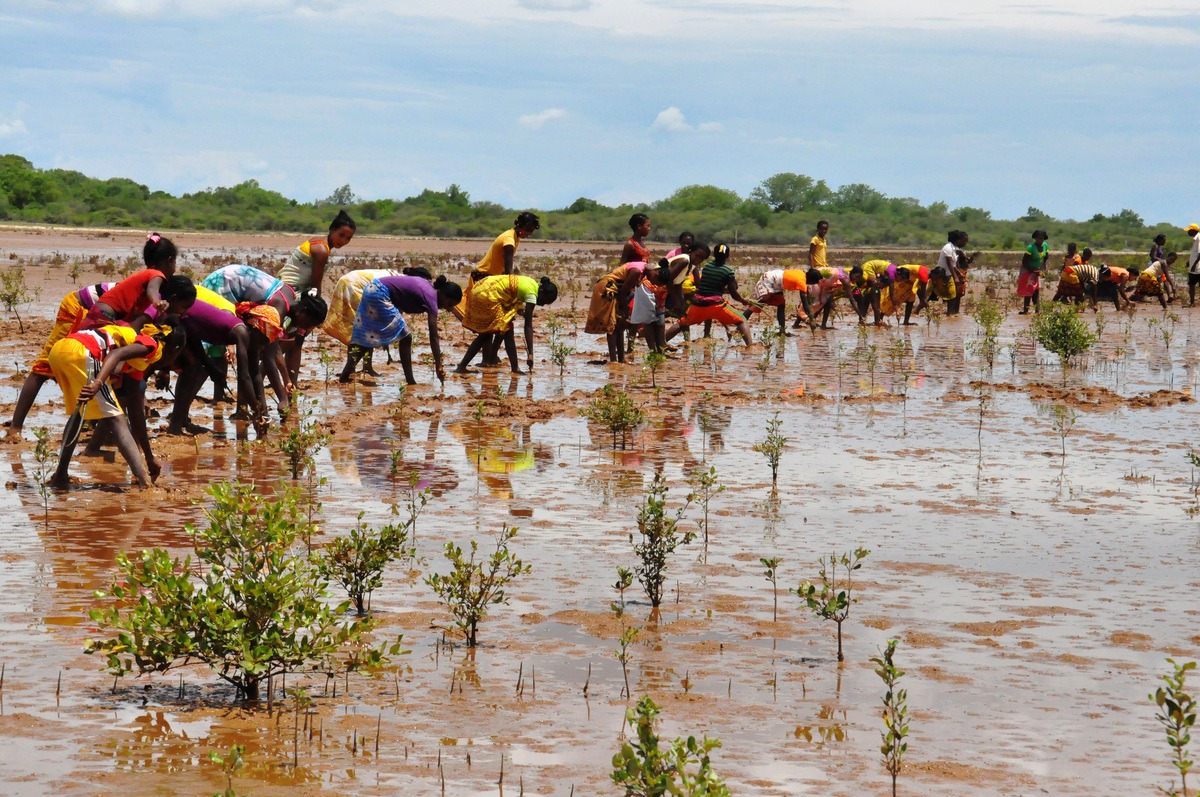Mangroves are at the forefront of disaster risk reduction
but these forests still need our help to do the job
The annual forestry journal published by the UN Food and Agriculture Organization included a review paper written by WWF experts on Nature-based solutions for water-related disasters.
One of the many benefits of mangroves to coastal communities is the ability of these trees to buffer the impacts of increasingly frequent and intense storms. Integrating mangroves into disaster risk reduction can be more effective than building infrastructure to protect coastal communities from flooding and deadly wave action – but when this natural infrastructure is lost due to development, alternate land usage, and even climate change side-effects, the benefit provided to communities is lost too.
In Nature-based solutions for water-related disasters the authors list several recommendations for maximizing the role of mangroves in disaster risk reduction (DRR):
“Disaster risk managers can improve outcomes in the use of mangroves for DRR by carefully considering a range of factors in risk reduction analysis, planning and management. They should consider the viability of current – and potential for future – protective mangrove ecosystem services in the context of combined climate and development impacts over time to better understand how well and to what extent mangroves might help reduce risks. Policymakers and managers should understand the interaction of these factors at a landscape scale.”
“Integrated, multidisciplinary post-disaster studies can increase understanding of the DRR efficacy of mangroves.”

Community mangrove restoration in Madagascar
© WWF-Madagascar
“It is important to consider how long it will take for mangroves affected by extreme events to recover and thereby provide their protective services. This should be factored into recovery and DRR planning.”
“As mangroves migrate due to a changing climate, they may no longer provide the same protective functions to communities relying on them.”
“Adaptive frameworks and decision-support tools that enable managers to integrate and continuously update projections of climate-change risk, land use and human population growth can increase the effectiveness of natural infrastructure, including mangroves.”
Click here to read the paper in the Unasylva journal beginning on page 67.